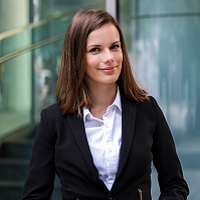Federal Reserve Rate Cuts: Implications for Global Economies

Federal Reserve Rate Cuts: What's on the Horizon
The upcoming meeting of the Federal Reserve (Fed) has sparked a lively conversation among economic analysts. The main question isn’t if the rates will be cut, but rather how significant those cuts will be. Following this, the European Central Bank (ECB) is expected to make similar moves, showcasing a synchronized approach among major central banks worldwide.
Many forecasts indicate a 25 basis point rate cut is likely during the next Fed meeting. Analysts suggest that if the job market starts to weaken, we may see even more substantial cuts down the line. This shift in policy is anticipated to stir up changes in interest rates, a development that investors should follow closely.
Recent inflation figures prompted a sharp rise in yields on the 10-year U.S. Treasury, highlighting the uncertainty surrounding future rates and employment trends. As the situation unfolds, the yield curve appears to be entering a normalization phase, which could have broader implications for overall economic stability.
Central Banks Collaborate to Ease Monetary Policies
This week's ECB meeting is pivotal as it evaluates economic conditions and potential policy adjustments. There's a strong expectation that the ECB will likely lower rates by 0.25%, reinforcing the global trend of easing that began with the Fed and other central banks. Christine Lagarde, the President of the ECB, has taken the lead in these rate cuts, implementing reductions since June in response to slowing growth within the euro area.
As the Fed aligns its actions with the ECB, the U.S. dollar could weaken, reflecting market adjustments to these monetary policies. Recent economic data in the U.S., paired with low inflation rates, have impacted Treasury yields. We saw a significant moment when the two-year Treasury yield fell below the 10-year yield. This indicates that markets are preparing for potential aggressive rate cuts by the Fed, even amidst persistent inflation concerns.
The Disinversion of the Yield Curve
Deciphering the Importance of Rate Cuts
Source: LPL Research, Federal Reserve Board
The subject of potential recessions often circles around the inversion of the yield curve, a topic that's been widely discussed. While the curve has remained inverted, it’s crucial to explore the driving factors behind the recent changes, especially those tied to its dis-inversion.
Fed Chairman Jerome Powell recently pointed out that while these inverted curves signal statistical patterns, they don't serve as definitive predictors of economic outcomes. The current trend of dis-inversion seems to stem from decreasing signals of economic growth, heightened expectations for rate cuts by the Fed, and ongoing attraction for the Treasury market from global investors amidst international uncertainties.
Reflecting on previous dis-inversion events, like those that occurred in the mid-1990s, we see that the economy can still thrive even with rate cuts, particularly when inflation is in check and consumer spending is robust.
A Cautionary Look
Insights from the mid-to-late 1990s reveal how the U.S. sidestepped a recession despite the Fed implementing rate cuts while experiencing notable growth in that era. Still, external crises, such as the Asian financial crisis, stirred volatility in global markets, testing domestic stability.
During those years, the Fed acted preemptively with additional rate cuts to ease pressures on businesses and consumers alike. This response also exposed weaknesses within the banking sector and excessive leveraging by financial entities, highlighted notably by the collapse of Long-Term Capital Management (LTCM).
Final Thoughts
Insights from LPL Research indicate that we might witness increased volatility in both bonds and equities as the global market adapts amid a softer growth outlook. While the Strategic and Tactical Asset Allocation Committee holds a neutral view on equities, they are on the lookout for opportunities to invest during market downturns, recognizing that volatility will likely persist in the near term.
Frequently Asked Questions
What are the expected changes in the Federal Reserve's interest rates?
The Federal Reserve is anticipated to cut rates by approximately 25 basis points, depending on job market conditions.
How are global central banks responding to economic conditions?
Central banks, including the ECB, are predicted to lower rates in coordination with the Fed as part of a global easing cycle.
What impact do rate cuts have on the yield curve?
Rate cuts often lead to discussions around the yield curve, especially regarding its inversion and the implications for potential recessions.
What role does the consumption rate play in economic growth?
Real disposable incomes and consumer spending are critical to maintaining economic stability, even when rates are cut.
How should investors approach this volatile market?
Investors are advised to keep an eye on opportunities in the equity market while remaining aware of the volatile environment prompted by global economic shifts.
About The Author
Contact Kelly Martin privately here. Or send an email with ATTN: Kelly Martin as the subject to contact@investorshangout.com.
About Investors Hangout
Investors Hangout is a leading online stock forum for financial discussion and learning, offering a wide range of free tools and resources. It draws in traders of all levels, who exchange market knowledge, investigate trading tactics, and keep an eye on industry developments in real time. Featuring financial articles, stock message boards, quotes, charts, company profiles, and live news updates. Through cooperative learning and a wealth of informational resources, it helps users from novices creating their first portfolios to experts honing their techniques. Join Investors Hangout today: https://investorshangout.com/
The content of this article is based on factual, publicly available information and does not represent legal, financial, or investment advice. Investors Hangout does not offer financial advice, and the author is not a licensed financial advisor. Consult a qualified advisor before making any financial or investment decisions based on this article. This article should not be considered advice to purchase, sell, or hold any securities or other investments. If any of the material provided here is inaccurate, please contact us for corrections.
